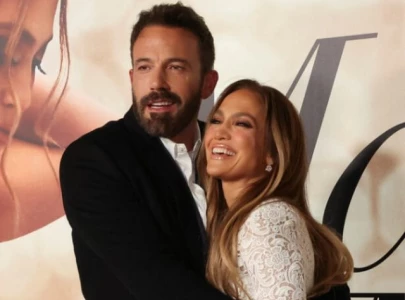
The negotiations with the International Monetary Fund (IMF) resemble a new season of a spy, suspense thriller, or horror movie, becoming more complex with each passing season. However, the IMF has created an illusion that it is a champion of reforms and works to revive economies.
Unfortunately, Pakistan’s elite and liberal scholars have subscribed to this illusion, signing agreement after agreement with the IMF. Following the standby arrangement, Pakistan has now finalised a new deal of $7 billion with the IMF.
The summary of the deal indicates that the situation is becoming extremely complicated. Before entering negotiations, Pakistan took several actions, including fast-tracking the privatisation process and sharply increasing electricity and gas prices.
The new deal shows that the IMF is still not satisfied and is asking for more; apparently, there is no end to these demands. The IMF follows its playbook, starting as a helping hand to reform the country and eventually seizing the power to dictate terms and engage in political interference.
Thus, there should be no ambiguity that the IMF’s new season will bring bitter consequences. It will unleash inflation, lower growth and sale of Pakistani assets. The text of the deal substantiates this assumption.
The IMF has asked Pakistan to phase out incentives to the Special Economic Zones (SEZs), phase out agricultural support prices and associated subsidies, and refrain from new regulatory or tax-based incentives or any guaranteed returns that could distort the investment landscape, including for projects channelled through the Special Investment Facilitation Council (SIFC). This would hurt the government and Pakistan’s interests.
New conditions are anticipated to further aggravate the business environment and discourage investment. The major victims of these conditions would be the SEZs under CPEC and the agriculture sector. CPEC has been targeted by Western countries and institutions, including the IMF. Since the launch of CPEC, the US has been asking Pakistan to rethink the programme. However, it is important to highlight that SEZs under CPEC do not enjoy special incentives (the structure and incentives of Rashakai SEZ can be studied for more information).
On the other hand, agriculture is already Pakistan’s most neglected sector. Farmers suffer from multiple problems, and there is fear that poverty is increasing in the farming community. The government has left farmers at the mercy of climate change, bad governance, and market forces. For example, this year, farmers first struggled to purchase inputs and now are waiting for customers to buy their commodities. Therefore, new conditions will further complicate the situation for farmers.
Moreover, the deal document indicates that the IMF wants to curtail SIFC’s powers. Pakistan created SIFC to attract investment by facilitating investors and offering incentives. It was a much-needed step to bring foreign direct investment (FDI).
However, the IMF has told Pakistan that SIFC is not exempt from its conditions. It seems that, in the end, SIFC will only be a privatisation facilitator.
Secondly, the IMF has asked Pakistan to expedite the privatisation process of state-owned enterprises (SOEs). The scary part of the deal is that the government will have to prioritise the privatisation of profit-making SOEs.
Pakistan has had a really bad experience with this strategy. In the late 1990s, Pakistan privatised some profit-making SOEs, which badly impacted the government’s revenue and the industrial sector (for more details, please read the paper by late Dr Pervaiz Tahir).
Thirdly, Pakistan will have to comply with the demand to keep the exchange rate open and let market forces decide the value of the Pakistani rupee. The rupee is feared to depreciate further due to speculative forces and the US’s policies of printing money and increasing interest rates.
In this context, if the IMF insists on market mechanisms for the exchange rate, Pakistan should work with the lender to devise protection for the rupee value. These terms paint a scary picture. Therefore, Pakistan needs to work on two fronts: 1) to lower the impact in the short term and 2) to create alternatives in the long term.
In the short term, Pakistan should take two urgent steps. First, it must tell the IMF that only Pakistani governments are not responsible for the current economic mess. The IMF, World Bank and other Western institutions are equally responsible.
The IMF has dragged Pakistan into the Structural Adjustment Programme (SAP) in the name of reforms and modernising the economy. They forced Pakistan to prematurely open up the economy, privatise national assets, and open strategic sectors to the private sector, which has wreaked havoc. The most prominent example is the Power Policy 1994. Second, Pakistan must eliminate all perks and non-productive subsidies, reserving subsidies only for the marginalised sectors.
For a long-term programme, Pakistan must expand and modernise its production base. CPEC and expected investment from the Gulf region can help Pakistan on this front.
However, this would not be possible without facilitating investors and completing projects and programmes on time. Against this backdrop, the SIFC is a good step, but it lacks the power to play an effective role. It does not have decision-making and implementation powers. That’s why investors appreciated the SIFC but with caution. They are concerned about the future status of SIFC, as it is common practice that in a liberal democracy, the preferences of one party differ from another.
Moreover, the present leadership of the army is determined to assist the government in turning around the economy, but if, in the future, the army leadership decides not to take part in economic issues, what would be the status of SIFC? Thus, it is suggested that SIFC must have decision-making and implementation power to build investor trust. Secondly, Pakistan must communicate to the IMF and other players that CPEC, investment from the Gulf region, and SIFC are internal matters of the country. There should be no interference from the IMF, other institutions, or global players.
These programmes and SIFC are required to put the economy back on track and chart a way for sustainable development. In conclusion, Pakistan must have a proper communication policy and strategy for friends and others. Pakistan should communicate to its friends that the IMF is acting more like a political body.
Thus, our friends should not tag bilateral financial and economic linkages with the IMF programme. This strengthens the IMF’s hands, and the IMF uses it to pressure Pakistan to accept its demands.
No doubt, Pakistan is in trouble, facing an economic crisis, and looking for financial cooperation to overcome the challenge of debt. But Pakistan is an important country. Moreover, every country faces challenges, and Pakistan is no exception. Pakistan has the will to overcome the challenges, and we will overcome them. Therefore, do not judge Pakistan based on the present situation; look into the future.
THE WRITER IS A POLITICAL ECONOMIST AND
A VISITING RESEARCH FELLOW AT HEBEI UNIVERSITY, CHINA























COMMENTS
Comments are moderated and generally will be posted if they are on-topic and not abusive.
For more information, please see our Comments FAQ